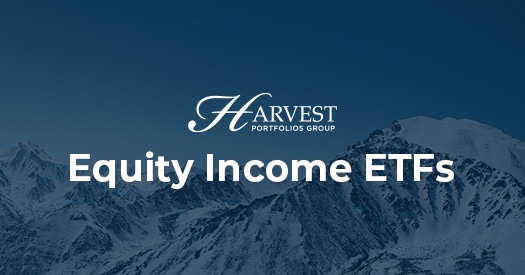By Harvest ETFs
Since the beginning of 2022, the financial world has seen a lot of volatility. That volatility has been driven by a number of factors: persistent inflation, central banks raising interest rates, and a slowing economy.
No matter which asset class you look at, there’s been weakness. Stocks are down. The bond market has lost value. The housing market is weakening. Commodities are selling off very quickly, and so on.
With all of this, as 2022 approaches Q4, how might advisors position client portfolios for 2023?
The Current Investing Landscape
Before going into any details, it’s important to understand how the current investing and economic landscape looks. What factors are creating volatility and what could be in the books for 2023? Knowing what’s happening and what’s ahead could help advisors when positioning client portfolios in 2023.
As briefly mentioned, there are a few factors at play that could set the stage for how assets perform in 2023: inflation, rising interest rates, and the possible slowdown of economic growth.
Persistent Inflation
Inflation has become a major problem. Statistics Canada reported that in August 2022, the Consumer Price Index (CPI)—an official measure of inflation—was up seven percent year-over-year. It’s down slightly from previous months, but extremely high relative to the historical average.
In the U.S., inflation is running at an extremely high pace—over eight percent, which is the highest it’s been since the early 1980s.
Higher Rates
A higher rate of inflation isn’t good. It impacts consumer sentiment and spending, and business investments and expenditures. So, the Bank of Canada and the Federal Reserve, who didn’t take the inflation threat seriously back in 2020 and 2021, are now trying to play catch up. They are raising interest rates in a fierce way.
The Bank of Canada has raised its benchmark interest rate to 3.25%, with a promise of raising the rate further. The Federal Reserve has raised the federal funds rate to 3.25% and has indicated that it could raise rates further. Not too long ago, the rates set by the Bank of Canada and Federal Reserve were set to0.25%.
It’s worth noting that the central banks of Canada and the U.S. run on a mandate of keeping the inflation rate between two and three percent. So, the current rate of inflation is way above their target rate.
A Possible Slowdown Brewing
As inflation remains high and central banks are raising interest rates, there’s one victim in the midst of all this: the economy. Higher interest rates over time certainly slow down the rate of inflation, but they also drag the pace of economic growth slower.
Higher interest rates seem to be creating headwinds in 2022 and could continue to do so in 2023 as well.
According to TD Economics, for example, the Canadian economy is forecasted to grow 3.3% in 2022, but the growth rate is expected to decline 0.9% in 2023. The U.S. economy is expected to grow 1.6% in 2022, and the growth is expected to be 0.7% in 2023.
What’s also worth noting is that over the past few months, the Bank of Canada and the Federal Reserve have lowered their forecasts for their respective economies. If one were to look at organizations like the International Monetary Fund (IMF) or the World Bank, they have issued dire outlooks as well.
While projections at the moment suggest a “soft landing” for the Canadian and the U.S. economies in 2022 and 2023, fears of a “hard landing” are also growing. A hard landing entails a recession and overall economic deterioration.
The Market Reaction
As the clouds of uncertainty around the central banks’ ability to control inflation have increased, investors have gotten worried, and rightfully so.
Since the beginning of 2022, the financial world has seen wild fluctuations.
Major stock indices like the S&P 500 are down close to 20% year-to-date as at late September 2022. The Canadian comparable S&P/TSX Composite Index has dropped nearly nine percent year-to-date.
The bond markets are going through a period of severe volatility as well. Short-term bonds have sold-off significantly and their yields are extremely higher compared to recent averages. The yield curve is inverted—when the yields on short-term bonds are higher than the yields on long-term bonds—and inverted yield curves tends to be an indicator of a recession.
Ways to Position Client Portfolios in 2023
Assuming headwinds remain persistent in 2023, there are a few things to keep in mind: quality, income, and capital preservation.
Quality essentially means holding quality assets such as stocks in major companies with global brands and consistent financial performance in all sorts of economic environments. Another option is exchange-traded funds (ETFs) that hold quality companies. There are a lot of equity ETFs to consider in Canada. Some of these stocks or ETFs may have lower volatility compared to the overall market, and at times, could be a place where investors gravitate to when faced with uncertainty.
Thanks to financial innovation at scale, there are Canadian high dividend covered call ETFs that employ covered-call strategies where income can be generated from stocks that don’t even pay dividends. A covered call is where the ETF owns stocks and writes covered call options on those holdings to earn a premium. These ETFs could provide hefty and consistent income to the portfolio over time. In addition, income-generating covered call ETFs work well in all sorts of market conditions.
Lastly, capital preservation comes from diversification and proper investment management. ETFs could be an investment strategy for investors to consider. While they are managed by professional money managers, they also provide solid diversification—something that could be extremely difficult to achieve for an advisor using individual stocks.













